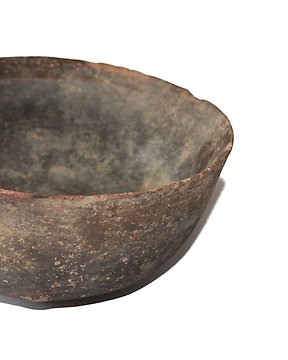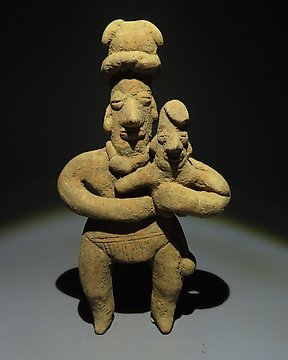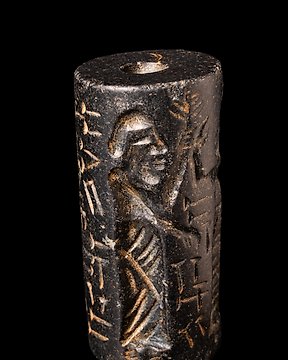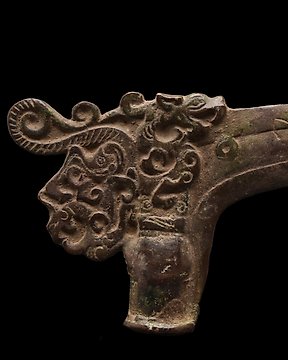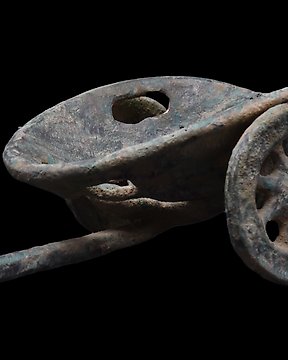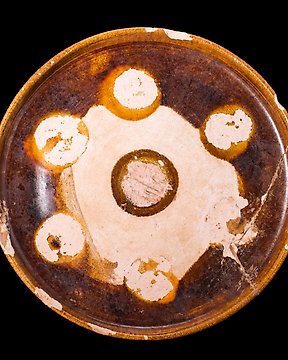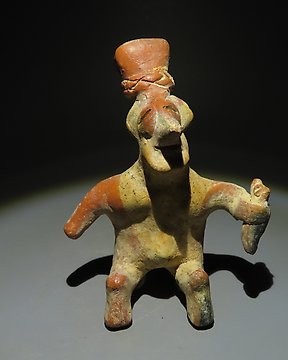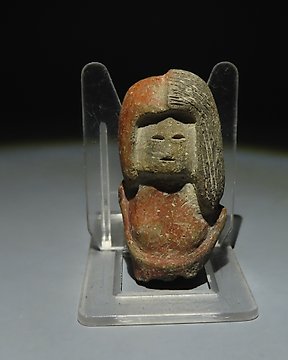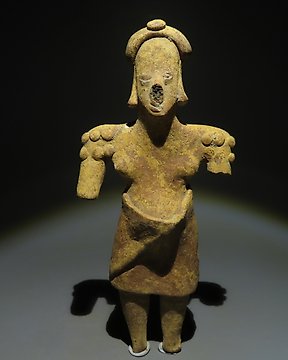Magnifique témoin du passé, envoyé avec tous les justificatifs, impeccable. Encore une fois très satisfait, un grand merci
Voir la traductionTeotihuacan, Mexique Terre cuite Figure, période classique, 200 - 700 après JC. 4 cm de hauteur. Licence d'importation espagnole.
Nº 84324135
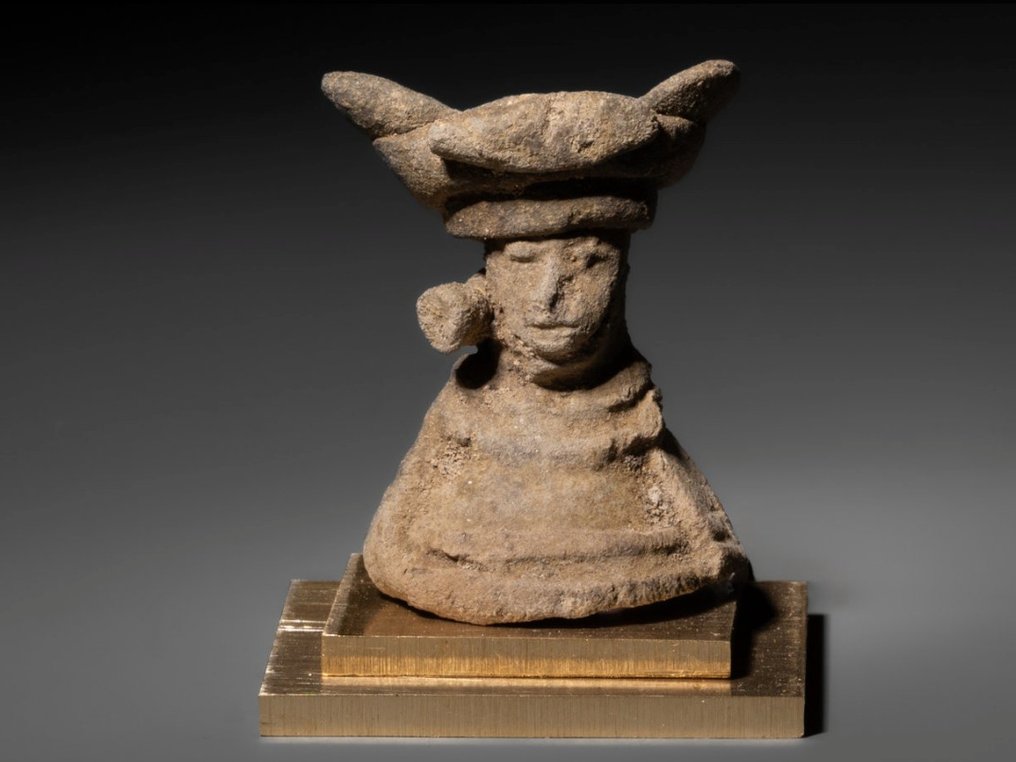


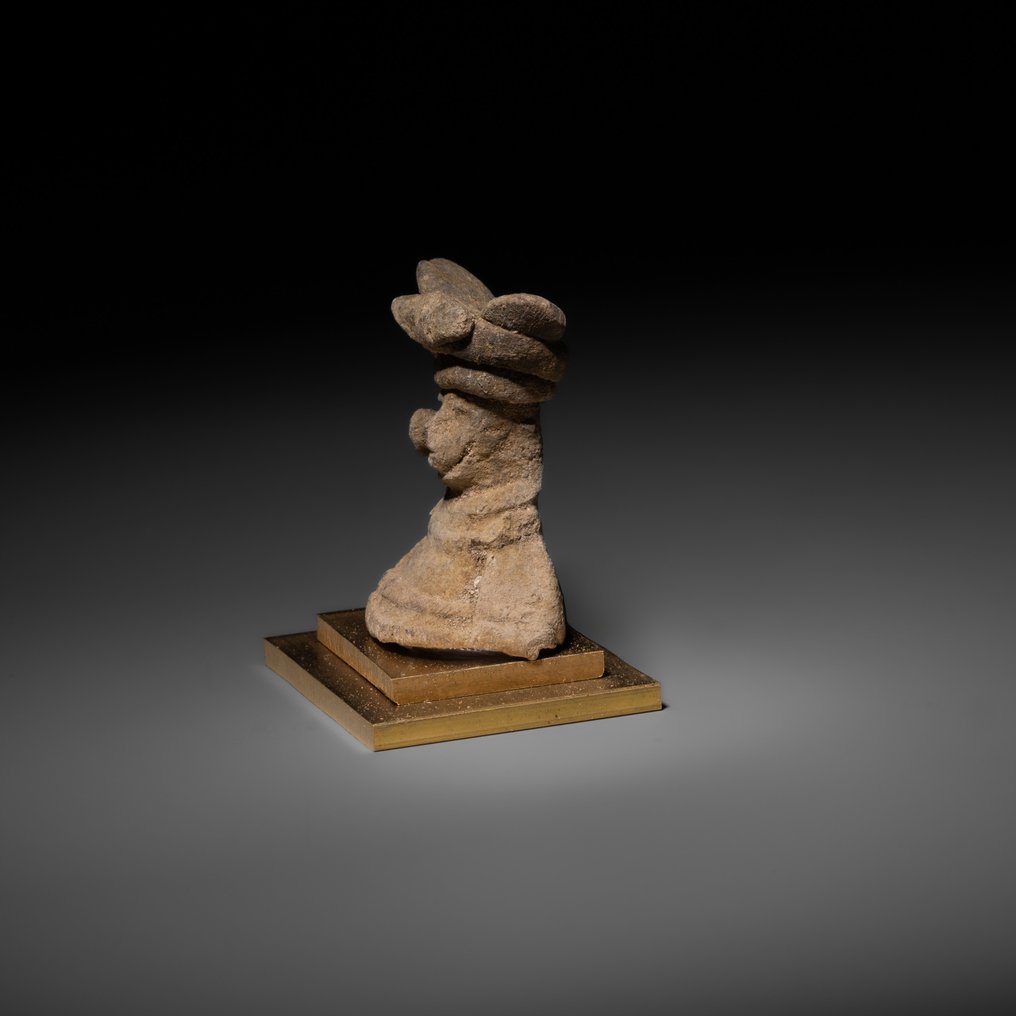
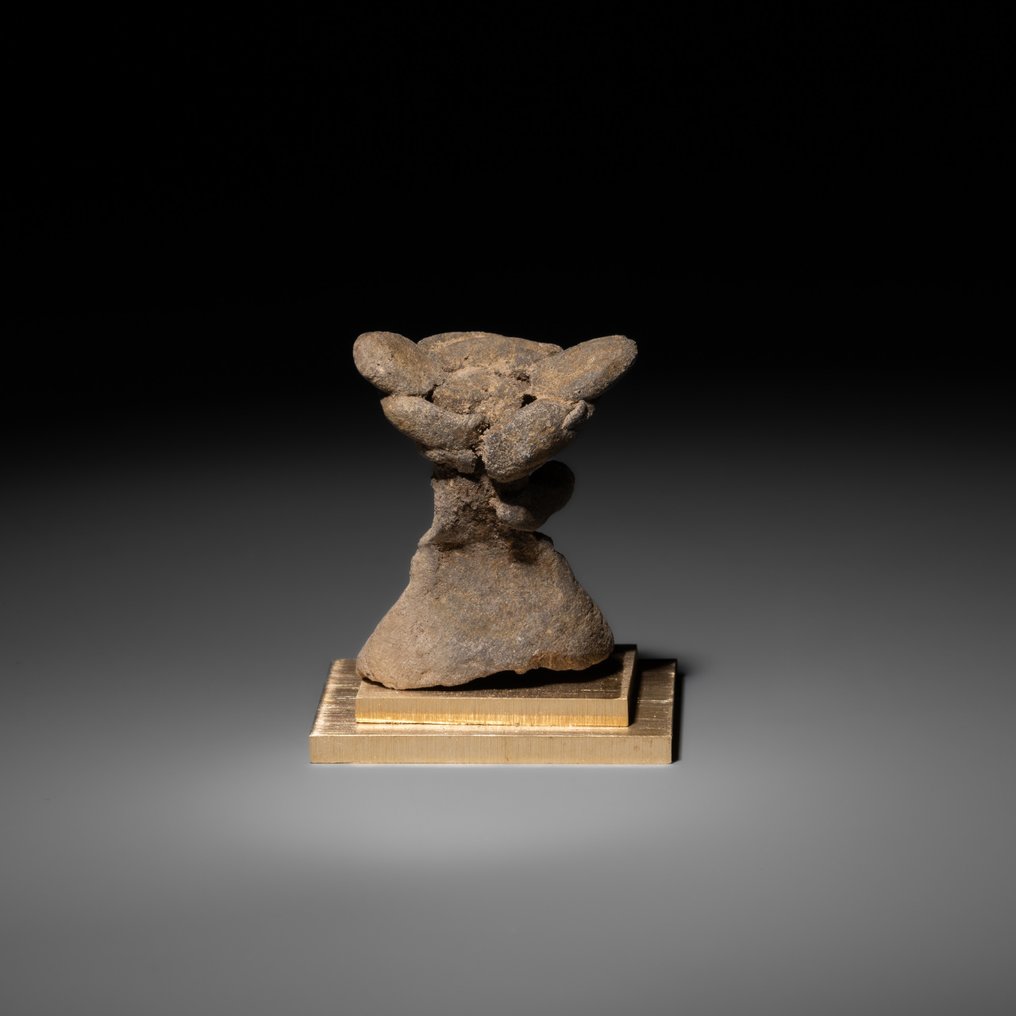
Figure.
- Nice Quality! -
Teotihuacan, Mexico, Classic Period, 200 - 700 AD.
Terracotta
4 cm height.
PROVENANCE: Private collection, Dijon, France.
CONDITION: Good condition. Without restorations.
BIBLIOGRAPHY:
- BERLO, J.C. (ed.). Art, Ideology, and the City of Teotihuacan. Dumbarton Oaks. 1992.
- BERRIN, K.; PASZTORY, E. (eds.). Teotihuacan: Art from the City of the Gods. Thames & Hudson. 1993.
- SCOTT, S. The Corpus of Terracotta Figurines from Sigvald Linne’s Excavations at Teotihuacan, Mexico (1932 & 1934-35). Ethnographical Museum of Sweden. 2001.
PARALLELS:
Fig. 1 Statuette of a seated figure. Teotihuacán, Mexico, 400-700 AD. Terracotta. Museo de América, Madrid, inv. 1985/01/133.
Fig. 2 Head. Teotihuacán, Mexico, 300-650 AD. Terracotta. Museum of Avila, Spain, inv. A/70/9.
Fig. 3 Articulated statuette. Teotihuacán, Mexico, AD 400-600. Terracotta. Los Angeles County Museum of Art (USA), inv. AC1996.146.47.
DESCRIPTION:
Bust made of terracotta representing the effigy of a priest, ruler or deity, with a truncated conical base decorated in relief. The character, with an oval face, sports large earflaps that project towards the front, although only one of them remains. The figure is topped by a large stepped circular headdress, with rounded projections that could represent plumes or the elements of an animal figure.
Teotihuacán was one of the largest cities in Mesoamerica during the Classic Period (ca. AD 200-600), a political, economic and religious centre with a multi-ethnic population of up to 100,000 inhabitants. It was located in the Central Highlands, within the Valley of Mexico, and its flourishing dates from approximately 150 BC to 700 AD. Its name means 'place where men become gods', as it was here that the teutl, the deified heroes, were buried.
Teotihuacán was a landmark in the millennia-long history of Mesoamerica; it was imposing in its scale and political and cultural importance, but also in its rigorous planning around religious buildings and the rites and ceremonies associated with them. Our current knowledge of the city is, however, limited; it has not been fully excavated, and many aspects of its culture have come down to us only through Aztec sources, unreliable because of their probable mythical and political motivations. It is therefore impossible to be sure that Teotihuacán directly controlled a territory, although its cultural and religious influence is evident in contemporary cities such as Tikal in Guatemala and Monte Albán in Oaxaca.
The end of the great city came around the year 700, after a period of political instability, internal social conflicts and climatic changes that affected the whole of northern Mesoamerica. Nevertheless, its ruins were a destination for explorers even before the Spanish conquest; Teotihuacán artefacts have been found at Toltec and Mexica sites to attest to this, and Postclassic Mexica mythology includes Teotihuacán as the setting for such fundamental myths as the legend of the Suns.
Teotihuacan terracotta statuettes are one of the most interesting artistic manifestations of what was the first of the great Mesoamerican cities. While their Zapotec and Mayan neighbours left portraits of their leaders and written chronicles, in Teotihuacan there are no historical representations within the ceremonial art, but an infinity of small figures and heads have been preserved which constitute an enormous source of information about the life and beliefs of the city's inhabitants. Intended for private worship and produced from an early date, these small terracottas evolved into increasingly dynamic and naturalistic forms; although they follow a general canon, they have innumerable variants that constitute a very rich iconography that has not yet been fully studied to this day. Some of the recurring features are the hybridisation of human and animal features, the repetition of certain clothing and ornaments suggesting affiliation to a particular social group, and even morphological details that could represent specific individuals.
Made by hand, moulded or a combination of both techniques, many of these statuettes are characterised by the schematic representation of the anatomy, which suggests that they may have originally been dressed (fig. 1). The faces of both the statuettes and the heads (fig. 2), on the other hand, show a greater level of detail. Many statuettes with articulated arms and legs have also been found (fig. 3), possibly also originally clothed. The abundance and variety of these pieces suggests the existence of a certain craft industry developed around the ceremonial centre of Teotihuacán, which must have exported its production beyond the city's territory, judging by the evidence from sites throughout Mesoamerica.
Notes:
- The piece includes authenticity certificate.
- The piece includes Spanish Export License.
- The seller guarantees that he acquired this piece according to all national and international laws related to the ownership of cultural property. Provenance statement seen by Catawiki.
À propos du vendeur
Figure.
- Nice Quality! -
Teotihuacan, Mexico, Classic Period, 200 - 700 AD.
Terracotta
4 cm height.
PROVENANCE: Private collection, Dijon, France.
CONDITION: Good condition. Without restorations.
BIBLIOGRAPHY:
- BERLO, J.C. (ed.). Art, Ideology, and the City of Teotihuacan. Dumbarton Oaks. 1992.
- BERRIN, K.; PASZTORY, E. (eds.). Teotihuacan: Art from the City of the Gods. Thames & Hudson. 1993.
- SCOTT, S. The Corpus of Terracotta Figurines from Sigvald Linne’s Excavations at Teotihuacan, Mexico (1932 & 1934-35). Ethnographical Museum of Sweden. 2001.
PARALLELS:
Fig. 1 Statuette of a seated figure. Teotihuacán, Mexico, 400-700 AD. Terracotta. Museo de América, Madrid, inv. 1985/01/133.
Fig. 2 Head. Teotihuacán, Mexico, 300-650 AD. Terracotta. Museum of Avila, Spain, inv. A/70/9.
Fig. 3 Articulated statuette. Teotihuacán, Mexico, AD 400-600. Terracotta. Los Angeles County Museum of Art (USA), inv. AC1996.146.47.
DESCRIPTION:
Bust made of terracotta representing the effigy of a priest, ruler or deity, with a truncated conical base decorated in relief. The character, with an oval face, sports large earflaps that project towards the front, although only one of them remains. The figure is topped by a large stepped circular headdress, with rounded projections that could represent plumes or the elements of an animal figure.
Teotihuacán was one of the largest cities in Mesoamerica during the Classic Period (ca. AD 200-600), a political, economic and religious centre with a multi-ethnic population of up to 100,000 inhabitants. It was located in the Central Highlands, within the Valley of Mexico, and its flourishing dates from approximately 150 BC to 700 AD. Its name means 'place where men become gods', as it was here that the teutl, the deified heroes, were buried.
Teotihuacán was a landmark in the millennia-long history of Mesoamerica; it was imposing in its scale and political and cultural importance, but also in its rigorous planning around religious buildings and the rites and ceremonies associated with them. Our current knowledge of the city is, however, limited; it has not been fully excavated, and many aspects of its culture have come down to us only through Aztec sources, unreliable because of their probable mythical and political motivations. It is therefore impossible to be sure that Teotihuacán directly controlled a territory, although its cultural and religious influence is evident in contemporary cities such as Tikal in Guatemala and Monte Albán in Oaxaca.
The end of the great city came around the year 700, after a period of political instability, internal social conflicts and climatic changes that affected the whole of northern Mesoamerica. Nevertheless, its ruins were a destination for explorers even before the Spanish conquest; Teotihuacán artefacts have been found at Toltec and Mexica sites to attest to this, and Postclassic Mexica mythology includes Teotihuacán as the setting for such fundamental myths as the legend of the Suns.
Teotihuacan terracotta statuettes are one of the most interesting artistic manifestations of what was the first of the great Mesoamerican cities. While their Zapotec and Mayan neighbours left portraits of their leaders and written chronicles, in Teotihuacan there are no historical representations within the ceremonial art, but an infinity of small figures and heads have been preserved which constitute an enormous source of information about the life and beliefs of the city's inhabitants. Intended for private worship and produced from an early date, these small terracottas evolved into increasingly dynamic and naturalistic forms; although they follow a general canon, they have innumerable variants that constitute a very rich iconography that has not yet been fully studied to this day. Some of the recurring features are the hybridisation of human and animal features, the repetition of certain clothing and ornaments suggesting affiliation to a particular social group, and even morphological details that could represent specific individuals.
Made by hand, moulded or a combination of both techniques, many of these statuettes are characterised by the schematic representation of the anatomy, which suggests that they may have originally been dressed (fig. 1). The faces of both the statuettes and the heads (fig. 2), on the other hand, show a greater level of detail. Many statuettes with articulated arms and legs have also been found (fig. 3), possibly also originally clothed. The abundance and variety of these pieces suggests the existence of a certain craft industry developed around the ceremonial centre of Teotihuacán, which must have exported its production beyond the city's territory, judging by the evidence from sites throughout Mesoamerica.
Notes:
- The piece includes authenticity certificate.
- The piece includes Spanish Export License.
- The seller guarantees that he acquired this piece according to all national and international laws related to the ownership of cultural property. Provenance statement seen by Catawiki.
À propos du vendeur
- 746
- 6
- 0
Thank you for the Special offer and the fast shipping of this excellent piece of art!
Voir la traductionvery good description of the object, very good price for this rare item,. Fast sending (has been at my place 2 days after buying!). Definitely would buy again.
Voir la traductionSehr schön
Voir la traductionAs described, perfect logistic
Voir la traductiongreat seller, everything came as should with certificate of authenticity
Voir la traductionExceptionally well packaged, description aligned with positing received
Voir la traductionReally precious, but without sound...
Voir la traductionPainting well packed and rapidly sent!
Voir la traductionsempre grande rapidità e professionalità
Voir la traductionparfait bien reçu, merci
Voir la traductionVery satisfied with the small Greek Lekythos. As always (we have already bought several items from Bagot), the object was wrapped and sent immediately and with the greatest care.
Voir la traductionPerfect, excellent condition, good packaging, the parcel arrived without any problems… all is perfect as usual. Thank you very much and wait for an other nice piece like this one. Gilles.
Voir la traduction+++ Top vendeur professionnel comme d'habitude
Voir la traductionEmbora o custo de transporte esteja acima da média foi, realmente, muito bem executado e em embalagem cuidada. Expeditos e profissionais. Recomendo
Voir la traductionSnel en correct en goed verpakt verzonden
Voir la traductionoggetto bellissimo, fedele alla descrizione, venditore affidabile
Voir la traductionVery nice piece and fast delivery
Voir la traductionEverything ok, top seller! Thank you again!
Voir la traductionvery beautiful and fast shipping!thank you!
Voir la traductionExcelent, very good piece++++
Voir la traductionVendedor increíble muy buenos he comprado muchas veces todo perfecto. Muchas gracias
Voir la traductionpas de problème ; merci beaucoup
Voir la traductiontres rapide conforme hope next +++
Voir la traductionSehr schön! Vielen Dank!
Voir la traduction- 746
- 6
- 0
Magnifique témoin du passé, envoyé avec tous les justificatifs, impeccable. Encore une fois très satisfait, un grand merci
Voir la traduction